Welcome to Doom9's Forum, THE in-place to be for everyone interested in DVD conversion. Before you start posting please read the forum rules. By posting to this forum you agree to abide by the rules. |
|
|
#31061 | Link |
|
Registered User
Join Date: Dec 2011
Posts: 1,812
|
One other thing first:
Here you can also see how SuperRes for chroma vanishes some contoures. super-xbr + SuperRes: 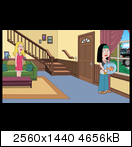 NNEDI3 256:  You can see some dark lines almost vanish compared to NNEDI3 256. I don't think this is desired, since NNEDI 256 is considered to be dam good with clear dark lines in simple structures. Now luma: NNEDI3 is still far superior for this strong cartoon resizing. However, super-xbr seems definitely better than NNEDI to me. NNEDI: 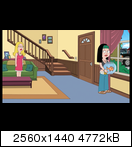 NNEDI3 256: 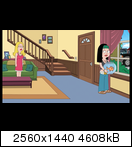 super-xbr: 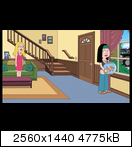 super-xbr + SuperRes: 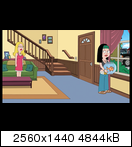 SuperRes settings:  The difference is very visible. But source's resolution is just 640x368, kinda extreme. With 720p -> WQHD, the difference is almost neglectable. NNEDI3 64: 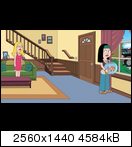 super-xbr + SuperRes: 
|
|
|

|
|
|
#31062 | Link |
|
Registered User
Join Date: Aug 2004
Location: Canada
Posts: 860
|
Bicubic75 AR chroma
Jinc3 AR luma https://farm1.staticflickr.com/554/1...d9662b77_o.png super-xbr doubling super-xbr chroma Jinc3 AR luma https://farm1.staticflickr.com/341/1...e2fce661_o.png Didn't we figure out a long time ago that the chroma upscaling method isn't very important past Bicubic75? Cartoon examples really exaggerate things Last edited by JarrettH; 15th June 2015 at 01:27. |
|
|

|
|
|
#31064 | Link |
|
Registered User
Join Date: Apr 2014
Posts: 48
|
88.12 has some serious improvements. Fullscreen exclusive times in D3D11 exclusive 8 bit has easily been reduced significantly (takes ~80% less time than before on Win 10, HDMI plasma), not sure why, but I can switch between FSE and fullscreen windowed super fast.
Build 10130 of Win 10 has stopped me from being able to use image doubling. Immediate crash with any algo. Hopefully next build it's not a problem. I can use Super-XBR for chroma now however, which works nicely. I didnt activate SuperRes for Chroma. I noticed there's no SuperRes default for Super-XBR doubling. Is there no need? Also, will there be defaults for Chroma? I'm curious on whether NEDI or Super-XBR is better for chroma. I'll do some testing, but I wonder what others think, especially for animation. |
|
|

|
|
|
#31065 | Link |
|
Registered User
Join Date: Feb 2014
Posts: 139
|
Aufkrawall, you've pointed out something I've also noticed with superchromares. Usually in lower quality sources (?), when you have white text on solid red or solid green backgrounds, such as on a street sign or news banner, there's a darkish outline around the white parts. Superchromares likes to attempt to erase these dark halos, but sometimes ends up turning the dark halos into oversaturated colored halos, and even introduce some possible chroma bleed.
This img from google images illustrates the halos I'm talking about.  Notice how there's darkening around the letters of the word "DePAUL". These disappear and sometimes become bright red (or whatever the background color is) halos if you apply superchromares. I think this might be some sort of chroma bleed where the red is going into the letters. It can make the image look strange and IMO pretty ugly. I'd post a sample screenshot, but I lost the file where I first noticed this issue. This street sign also illustrates the dark halos I'm talking about. Here, it's very obvious that the removal of those dark edges is desirable, and applying superchromares in these sorts of cases does work as intended.  In some other cases, thin red lines on black background will have very different saturation between superchromares and jinc3 ar, but it's harder to say what's supposed to be correct in those cases. Overall, Superchromares can look amazing in some isolated cases (solid red on white/black), but it does have these weird behaviors associated with it. Setting the anti-ringing to 1.00 seems to alleviate the color bleeding, but not the loss of the dark halos. Last edited by har3inger; 15th June 2015 at 03:38. |
|
|

|
|
|
#31066 | Link | ||
|
Registered User
Join Date: Sep 2013
Posts: 919
|
Quote:
* I downclock my GPU to save power. In version 88.11 the rendering was twice as fast, at about 20-25ms. Nothing special, just Lanczos 3, Smooth Motion, Ordered Dithering.
__________________
System: i7 3770K, GTX660, Win7 64bit, Panasonic ST60, Dell U2410. Last edited by James Freeman; 15th June 2015 at 07:15. |
||
|
|

|
|
|
#31067 | Link |
|
Registered User
Join Date: Dec 2008
Posts: 496
|
Try FS in 0.88.11 and de-select LL. The heavy contouring is a side-effect of the LL finesharp, which is also very apparent in the tests I've done. This does not happen with no LL enabled. I already showed screenshots to madshi, hopefully he will listen.
Last edited by iSunrise; 15th June 2015 at 07:34. |
|
|

|
|
|
#31068 | Link | |
|
Registered User
Join Date: Mar 2013
Posts: 101
|
Quote:
I thought there were suitable test video sequences in the MP4-2C HDTV Calibration Disc From the AVSForum however I just discovered that the 720p Chroma 4:2:0 and 4:4:4 resolution patterns I have been using aren't included - I must have picked them up elsewhere. Inanycase it shouldn't be that difficult to obtain suitable 720p resolution test sequences for upscaling if so inclined... You might be surprised by how some of the settings we are testing affect the video resolution under test conditions. That way you get a better idea of what to look for when testing on your video samples. Edit: There are image samples in various resolutions of the Belle Nuit Montage at their web site: http://www.belle-nuit.com/test-chart Last edited by MistahBonzai; 15th June 2015 at 07:13. Reason: added link to test images |
|
|
|

|
|
|
#31069 | Link |
|
Registered User
Join Date: Sep 2013
Posts: 919
|
"original AR" by Hyllian, looks best to me in this image.
It retains the image properties without enhancing anything and remains faithful to the original, as it should (IMO). Back to 88.11 for testing. Finesharp: LL over-enhances the edges and clips the shades = VERY BAD. Thinning 0.020 as agreed, I see little difference. Mode 3 as agreed. IMO, Strength should stay a variable for different content (for now).
__________________
System: i7 3770K, GTX660, Win7 64bit, Panasonic ST60, Dell U2410. Last edited by James Freeman; 15th June 2015 at 07:54. |
|
|

|
|
|
#31071 | Link | |
|
Registered User
Join Date: Mar 2009
Posts: 3,650
|
Quote:
It doesn't "exaggerate things" it highlights things. That frame you have screenshot there isn't a good test, there's almost nothing that any chroma resizer is going to make a shred of difference on. There are many of us that use madVR for upscaling of lower resolution cartoon/animated content where chroma upscaling quality is of more obvious importance but it can still be hard to tell much of a difference in many scenes. Bicubic 75 AR has been determined to be very good for it's performance penalty, but sometimes people want "better" results. Last edited by ryrynz; 15th June 2015 at 09:32. |
|
|
|

|
|
|
#31072 | Link | |
|
Registered User
Join Date: Dec 2008
Posts: 496
|
Quote:
On HQ/HD 4:2:0 mastered movies with a high bitrate the differences will be a lot less visible than on cartoon, game recordings or line charts or patterns. But they are just as valid examples and very useful to detect specific behaviours of algorithms madVR uses. |
|
|
|

|
|
|
#31073 | Link | |||||||||||||||
|
Registered Developer
Join Date: Sep 2006
Posts: 9,140
|
Quote:
It's already implemented in v0.88.12. Quote:
Quote:
Quote:
Quote:
Quote:
Quote:
Quote:
I'm not a fan of NEDI at all, at least not when using it "alone". In combination with SuperRes NEDI might work well, though, because SuperRes removes most of the ugly NEDI artifacts. I believe NEDI should not be used alone, but only in combination with SuperRes. Quote:
Quote:
As I wrote in the v0.88.12 release notes, at the moment when you voiced your concerns about FineSharp's linear light option, I had already removed the option from my sources. I only had the choice of either releasing v0.88.12 as it was, or delaying it a full week. Should I have delayed it - keeping super-xbr from all madVR users for a full week? I'm perfectly fine with further discussing the linear light option. I'm willing to revert my decision, if that's what seems the correct choice to me. The reason I'm trying to make some reasonably fast decisions now is that I want to reduce the complexity of the testing/feedback cycle. The less options there are, the more precise the feedback will be. If you have to test 3 options for an algorithm instead of 2 options, it costs you much more time, and the feedback will be less precise. So that's why I thought it was a good idea to remove an option quickly where every user had the same preference, anyway. Quote:
Quote:
Quote:
Quote:
Do you know how sharpeners technically work? They usually take some sort of "average" of the neighborhood of each pixel, and then kind of substract the average from the image. The key thing here is that the averaging practically blends multiple colors together. And scientifically it is "wrong" to do this in gamma light. It will produce incorrect results. The brightening you're seeing when applying FineSharp with "LL off" with those 3 test images I uploaded shows exactly this problem. Turning LL on fixes this problem and resultingly should make the whole processing scientifically "better". You saying that we can ignore this problem because it's caused by too high sharpening strength is kind of funny, considering that you zoomed into the squirrel screenshot, created with the same high sharpening strength, and then on top even applied some GIMP processing to make the differences even more visible! If this is not a double standard then what is? Of course lowering the sharpening strength will also lower the brightening that LL off produces with those 3 test images. But in the same way lowering the sharpening strength will also lower the artifacts that you're complaining about. But that doesn't mean that either artifacts isn't there, or should be ignored. Quote:
From what I can see, LL on/off both produce different kinds of artifacts. The key question is which kind of artifacts are worse. I know your opinion about it. I'm not sure myself. I'm wondering whether maybe I should try a FineSharp LL build using the BT.709 gamma curve instead of a 2.2 power curve. Maybe that could give us the best of both worlds? Will have to wait for next weekend, though. |
|||||||||||||||
|
|

|
|
|
#31074 | Link |
|
Registered User
Join Date: May 2011
Posts: 164
|
Does the fact overlay mode report 24fps in fraps while regular FSE report 144 (or whatever my screen refresh rate is) matter in any way? I'm curious because I've started using Smooth motion (as I've heard it's great with high refresh rates) and I've noticed that it doubles the reported framerate when using overlay mode (so 24fps becomes 48, 60 becomes becomes 120 etc.) while obviously with regular FSE it just shows a number equal to my refresh rate no matter what.
(overlay feels just as smooth and reliable as FSE for me so I kinda doubt it matters but I'd rather make sure I'm not doing anything wrong  ) )
|
|
|

|
|
|
#31075 | Link | |
|
Registered User
Join Date: Oct 2012
Posts: 7,926
|
Quote:
but no real issue for both AMD and NVIDIA they both aim at gaming performance not openCL. |
|
|
|

|
|
|
#31076 | Link | |
|
Registered User
Join Date: Oct 2012
Posts: 7,926
|
Quote:
|
|
|
|

|
|
|
#31078 | Link |
|
Registered User
Join Date: May 2015
Posts: 36
|
Madvr 88.12 + AMD Crossfire Workaround
First of all i think this is the best version madvr had so far in terms of handling queues especially when using DX11 FSE 10bit mode. (And Display mode switching + FSE was insanely fast this time. Around 3 seconds waiting time compared to previous version where you had to wait for 10-15 seconds at best.)
I'm running on Win 8.1 64bit 2X HD7850 on crossfire + FX8320 @ 4.3ghz Using Samsung 40inch Led Tv as my monitor. AMD CCC video settings turned all to off except deinterlacing and ITC Processing and Pixel Format: RBG 4:4:4 i followed the madvr setup guide found here https://imouto.my/madvr/ but made some modifications>> i changed NNEDI3 and use Super-XBR instead since it seems lighter on AMD cards than NNEDI3 + InteropHack enabled. I'm also using SuperRes Filter on Chroma Upscaling though I know that SuperRes Filter's default settings was for NNEDI3 but it seems picture quality wasn't affected much. I cannot discern any big difference between Super-XBR vs. NNEDI3 so performance wise i selected Super-XBR since my HD7850 liked it better hehe. Workaround for AMD Crossfire Users >> Since the stupid AMD Catalyst always mistake Madvr as a game, ergo Crossfire is always turned on whenever it detects Madvr. Now i found a simple work around to prevent AMD Catalyst to not use Crossfire when it detects Madvr. Here's the procedure. Just open your AMD CCC and head on to "My Digital Flat-Panels Tab" and put a Check to "Enable GPU up-scaling" ofcourse put the dot on "scale image to full panel size" and voila! no more crossfire on Madvr yehey! advantages: 1. No more power wasting due to Crossfire (we already know that madvr will not benefit on using crossfire) 2. In some way performance will be better since crossfire is not enabled (maybe because no more mirroring of data between gpu's) disadvantages: 1. Madvr Display Mode Switching will not gonna work any longer, I don't know why but it seems using the said work around will bypass Madvr's Display Mode Switching. 2. It may in some way interfere with madvr's handling of things, especially when using DX11 FSE 10bit queues aren't full when using this work around. So you are stuck on using DX11 Windowed Fullscreen 8bit. So in the end it's up to you. If you want DX11 FSE 10bit running smoothly with crossfire wasting energy then do not use this work around. But if you want to save electricity and make the 2nd card enter powersave then use this workaround. FYI i cannot discern any difference at all using DX11 FSE 10bit vs. DX11 WF (Windowed Fullscreen) 8bit. That's why i'm using this setup. Any corrections, objections and violent reactions are welcome. P.S you need to use Madvr Smooth Motion since you are stuck on 60hz when using this workaround. Last edited by RyuzakiL; 15th June 2015 at 12:30. |
|
|

|
|
|
#31079 | Link | |||||
|
Registered User
Join Date: Dec 2008
Posts: 496
|
Quote:
Quote:
If you show the average Joe two pictures on two of the very same monitors at the same time and you maximize every picture processing setting on one monitor, the majority will fall for it and pick the one with the heavy processing, but not the more accurate one. I, however, specifically look for an accurate representation, that's why I also bought an Eizo CG, because I want to see every detail in the source and I don't think that picking an algorithm that looks totally processed (like finesharp LL does) makes any sense at all when you can have finesharp without LL. The negatives will quickly add up and you end with heavy ringing that destroys every picture. One of the main reasons why a lot of DVDs were so bad, was not because of their low native resolution, but because of their excessive ringing that was applied in post. They are almost completely unwatchable when you upscale them to HD or 4K. Finesharp with the current LL will amplify that even more and that doesn't make any sense when you can just use finesharp with no LL without these negatives. Quote:
Quote:
Quote:
And like I already explained, I can also see that the diagonal lines will get brightened up a bit, but that's because of the compression artefacts that get amplified by using higher strength values. The squirrel is however completely unnaffected by this, without all of the heavy ringing. And for me, real images are always more important than diagonal lines. In real images, the tiny amount of brightening is not noticable at all. At least not in the shots I saw, including the ones that you kindly provided. I am pretty sure that 6233638 and cyberbeing would also love to have a say in this, but sadly, both seem to be too time restricted or just not here atm. So please at least leave the LL option in place, so others still are able to test with before/after results. Last edited by iSunrise; 15th June 2015 at 13:11. |
|||||
|
|

|
|
|
#31080 | Link | |
|
Registered User
Join Date: May 2014
Posts: 9
|
Quote:
Last edited by Meulen92; 15th June 2015 at 13:22. |
|
|
|

|
 |
| Tags |
| direct compute, dithering, error diffusion, madvr, ngu, nnedi3, quality, renderer, scaling, uhd upscaling, upsampling |
|
|